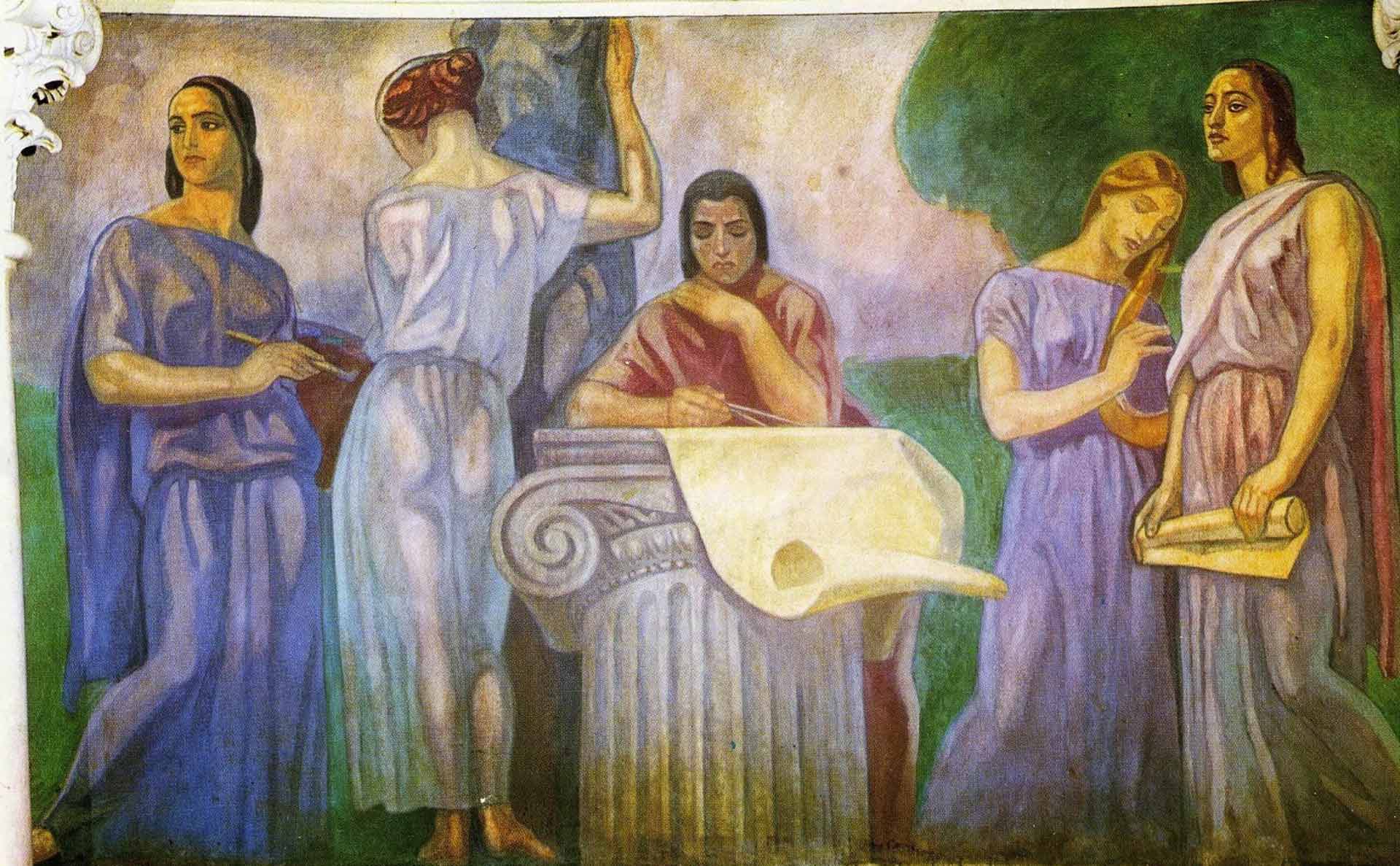
As part of the Didaktika project, the Museum designs educational areas and organizes activities to complement its exhibitions. Tools and resources are provided both in the galleries and online to increase viewers’ understanding and comprehension of the artists and works on display.

Did you know…? One of most relevant examples of Basque large-scale mural painting from the early 20th century can be found in Madrid.
It was painted by Aurelio Arteta (b. 1879, Bilbao; d. 1940, Mexico City) in 1923. Arteta drew inspiration from the poem by Belgian writer Émile Verhaeren L’effort and painted a twelve-mural allegorical series that pays tribute to work in a variety of forms: agriculture, industry, mining, fishing, intellectual endeavor, art, and so on. Arteta chose fresco as his technique; he had learnt it in Paris and in Italy. The series had been commissioned by his friend Ricardo Bastida, an architect from Bilbao who had been entrusted with the design of Banco de Bilbao in Madrid, located on 16, Alcalá Street.
Arteta’s Effort is prominently on display in the building’s rotunda, between the glass dome and the alabaster classical columns. The frescoes were restored in 2003 to show their soft shade palette evoking Impressionism, in harmony with gray tones and more vibrant, modern hues. The artist was very proud of this work, which he remembered years later when he was in exile in Mexico, where he died in 1940.
Bilbao and Painting offers visitors another fine example of Basque mural painting: Bermeo, by José María de Ucelay (b. 1903, Bermeo, Biscay). Ucelay painted this mural for the seat of the Basque Nationalist Party (batzoki) in his hometown. The building had been designed by renowned architect Pedro Ispizua, who also designed the El Arenal music kiosk in Bilbao (1927). Bermeo (16 meters in length, oil on plywood) pays tribute to everyday life in the fishing village of Bermeo, as well as to its sailors and landmarks.
Aurelio Arteta
Las artes (1923)
Detalle de uno de los doce paneles del entonces edificio del Banco de Bilbao en la calle Alcalá de Madrid con pinturas de Aurelio Arteta
